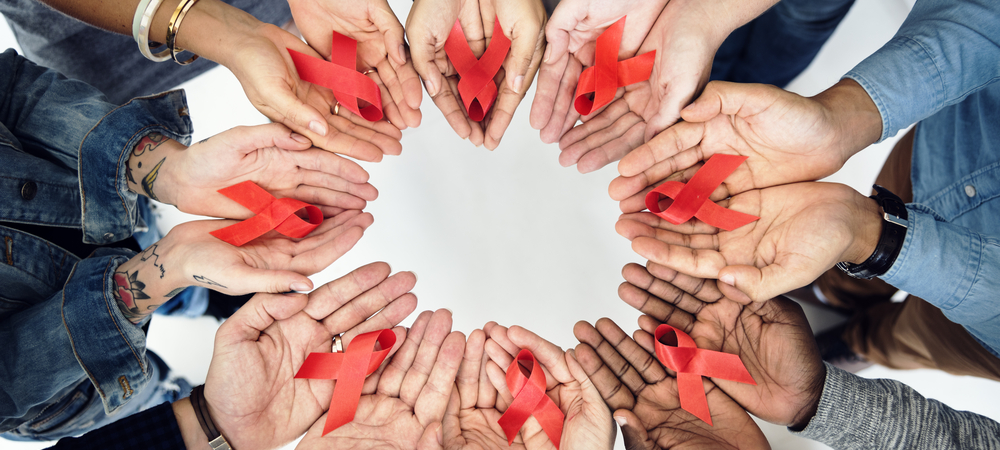HIV and AIDS Basics

People may talk about HIV and AIDS like they are exactly the same thing, but they are not. HIV is the virus that infects a person. With treatment, women with HIV can live long lives and be otherwise healthy. AIDS is the later stage of HIV infection when the body's immune system is damaged.
HIV is the name of a virus that attacks the body's immune (defense) system.
H — Human: This particular virus is found only in humans.
I — Immunodeficiency: This virus weakens the immune system and makes it harder to do its job of protecting the body against bacteria, viruses, or other germs.
V — Virus: This is a tiny, infection-causing particle that takes over other cells to grow and spread.
The body's immune system cannot fight off HIV by itself. It needs help from medicine to fight HIV. Without medicine, HIV damages and eventually causes serious damage to the immune system. At this point, HIV progresses to AIDS.
AIDS is the advanced stage of HIV infection when the body's immune system is damaged. The immune cells (white blood cells) are so few that they can no longer fight off severe infections and some types of cancer. People with AIDS are often critically ill and need medical treatment to prevent death.
A — Acquired: The infection comes after being exposed to HIV from someone else's bodily fluids, usually blood or sexual fluids such as semen. HIV can also be passed from mother to baby during pregnancy, labor and delivery, and breastfeeding. But it is not a genetic disease (passed down among families).
I — Immuno: It affects the cells and organs of the immune system (the body's system that fights infections).
D — Deficiency: The body's immune system does not work properly, putting it at risk for other infections and some cancers.
S — Syndrome: Many symptoms common to a specific illness
HIV is different in women compared to men in several ways:
- A woman has a higher risk of getting HIV when having vaginal sex than a man has.
- Some health problems, such as sexually transmitted infections (STIs) and vaginal yeast infections, are more common, more serious, or harder to treat in women with HIV.
- Women with HIV can pass HIV to their babies during pregnancy and birth and through breastfeeding. But with treatment, the risk of passing HIV to your baby is less than one in 100.
You cannot rely on symptoms to know if you have HIV. The only way to know for sure is to be tested. Some people develop flu-like symptoms within two to four weeks of exposure, but many people with HIV do not. If you think you have been exposed to HIV, get tested. Testing is the only way to know for sure if you have HIV.
Without treatment, women with HIV will usually show signs of AIDS within five to 10 years of first getting infected with HIV. Women who get treatment and keep HIV under control can delay the development of AIDS for decades.
How long you have HIV before you develop AIDS depends on factors you can control and some things you can't control:
- What you can control: taking your HIV medicine (antiretrovirals, or ARVs) prescribed by your doctor on time and every day, seeing your doctor as often as recommended, managing stress, and choosing healthy foods. These actions can help you live a longer life with HIV.
- What you can't control: the kind (the "strain") of HIV that you have. Some strains of HIV progress to AIDS more quickly than others, despite treatment. You also may not be able to control what resources are available to you (such as adequate housing, a steady income, social support, and access to good health care).
Only a doctor can diagnose AIDS. You have developed AIDS if you already have HIV and one or more of the following happens:
- Your "viral load" (amount of HIV that can be measured in your blood) stays high and causes your immune cells' CD4+ count to go down.
- Your CD4+ count drops below 200 cells per cubic millimeter (normal is 500 to 1,200). CD4 cells (sometimes called T cells or T lymphocytes) are important for fighting infection. Your doctor will monitor your CD4+ count.
- You have an AIDS-defining opportunistic infection or cancer.
No. Today, new and effective drugs make it possible for people with HIV to live longer and healthier lives.
If you have HIV, you can have a near-normal lifespan if you get regular medical care and treatment for HIV, take your medicine as your doctor tells you to, and have your viral load under control.
How early you begin treatment has a direct effect on your life expectancy. So, for example, a 35-year-old woman diagnosed with HIV early in the infection could expect to live to be 80 or even older if she takes her medicines daily, maintains levels of HIV (viral load) too low to be detected in the blood, and gets regular medical care.
People who have HIV, are on treatment, and have an undetectable viral load also have a much lower risk of passing HIV to their partners.
References
- Centers for Disease Control and Prevention. (2016). HIV Among Women.
- Centers for Disease Control and Prevention. (2015). HIV Surveillance Report, Vol. 26.
- World Health Organization. (2006). Sexual and reproductive health of women living with HIV/AIDS.
- HIV.gov. (2015). Symptoms of HIV.
- May, M., et al. (2011). Impact of late diagnosis and treatment on life expectancy in people with HIV-1: UK Collaborative HIV Cohort (UK CHIC) Study. BMJ; 343:d6016.
- HIV.gov. (2011). Treatment Adherence.
Source
The Office on Women's Health in the U.S. Department of Health and Human Services
Content last updated November 21, 2018
